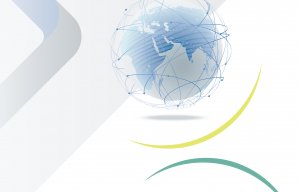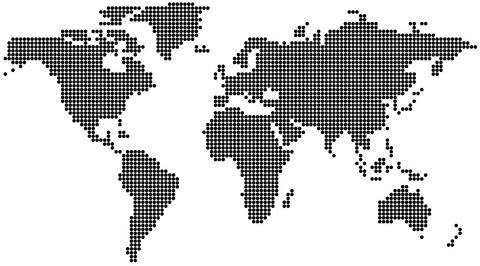
Global perspective from EDANA and INDA
Global Industry Analysts (GIA) has released a new comprehensive global report on textile materials markets titled ‘Textile Materials: A Global Strategic Business Report’. According to the report, the global market for textile fibres will reach 101 million tons, while the spun yarn market will 51 million tons by the year 2017, driven by rising consumer confidence, increasing demand for textiles, globalization of textile trade, and a surge in demand from key end-use markets.

15th May 2012
Innovation in Textiles
|
San Jose, CA
Global Industry Analysts (GIA) has released a new comprehensive global report on textile materials markets titled ‘Textile Materials: A Global Strategic Business Report’.
According to the report, the global market for textile fibres will reach 101 million tons, while the spun yarn market will 51 million tons by the year 2017, driven by rising consumer confidence, increasing demand for textiles, globalization of textile trade, and a surge in demand from key end-use markets.
Growing dominance of emerging markets in the Asia-Pacific and Latin American region is also expected to drive market growth.
“The global textile industry is heterogeneous in nature, and relies upon other industries, particularly clothing and home furnishing, for its demand. Demand for textiles is a function of consumers’ preference towards the consumption for apparel, home furnishings, and automotive products.
The industry is largely cyclical, due to the varied nature of profit levels experienced by textile manufacturers. Additionally, the demand is also influenced by a number of demographic factors, such as growth in disposable income, consumer confidence levels, and other general economic variables.
Consumption of fibres in the manufacture of household textiles and furnishings has been increasing over the years. Traditionally, this sector has primarily relied upon natural fibres. However, natural fibres have been losing share to manmade fibres over the past two decades.
Presently, natural fibres, including cotton, wool, silk and other natural fibres, account for a share of close to 37% of the overall fibre supply, as against a share of about 41% in 2000, and about 60% in 1990. Within the natural fibres, cotton emerged as the key growth driver, supported by approval for the cultivation of genetically modified crops, while wool continued to post declines.
On the other hand, the consumption of synthetic fibre is increasing at the expense of natural fibres. The primary reason is the reduction in cotton crop due to pressures on agricultural land. Moreover, the synthetic market is growing due to the improved perception of polyester.
Growth for synthetic fibres is also expected to stem from nonwovens, especially spunlaid products, for which the raw material is polymer rather than the fibre or filament yarn. Use of relatively low-cost glass fibre in composites is also forecast to rise. Higher value specialty fibres, such as aramids and carbon fibres, are expected to show continuing growth, but are likely to continue to account for a small portion of the total synthetic fibres market.
Of late, fibres market worldwide has been affected by slowing demand from developed countries and prolonged overcapacity, particularly in polyester, leading to pressure on price and margins. Subsequently, the global market was severely affected by the global economic downturn, chiefly in the year 2008. Post recession, the market is already showing signs of improvement, however, the major portion of growth for the industry is expected to emanate from the emerging markets in the Asia-Pacific and Latin-American regions, rather than from the developed markets.
Asia-Pacific represents the largest regional market for textile materials globally, as stated by the new market research report on Textile Materials.
Europe trails behind the Asia-Pacific market, however, growth in the market would continue to be led by Asia-Pacific, which is projected to be the fastest growing regional market for Textile Fibres as well as Spun Yarn during the analysis period. China is the world’s largest producer as well as consumer of filament/fibres utilized in textiles.
The country is also the leading exporter of viscose filament yarn, polyester filament yarn, as well as polyester staple fibre and viscose staple fibre. China is also the largest nylon exporter, and ranks tenth in the exports of acrylic fibres.
With regards to imports, China is the largest importer of nylon, acrylic staple fibre, and cotton. The country ranks third in imports of polyester filament yarn as well as polyester staple fibre. Additionally, China is the world’s second and third largest importer of viscose staple and viscose filament, respectively.
Despite the stiff competition from leading markets in the Asia-Pacific region such as China, Latin-American countries, such as Brazil, going forward could emerge as one of the leading players in the global apparel and textiles market. To complement the already lucrative, fully integrated cotton industrial sector, Brazil is making major investments in large polyester project for developing the artificial fibre apparel and textile industries.
Segment-wise, Synthetic Fibres represents the largest segment of the textile fibres market, while natural yarns dominate the global spun yarn market. However, growth in the spun yarn market would be spearheaded by Synthetic Yarns segment.
Major players profiled in the report include Acordis BV, Asahi Kasei Fibers Corporation, EI DuPont De Nemours & Co, Honeywell International Inc., INVISTA, Reliance Industries Ltd., Rhodia Polyamide, Sinopec Yizheng Chemical Fiber Co. Ltd., Sinterama SpA, Toray Industries Inc., among others.
The research report titled ‘Textile Materials: A Global Strategic Business Report’ announced by Global Industry Analysts Inc., provides a comprehensive review of the textile materials markets, impact of global recession on the market, production statistics of various textile materials, current market trends, key growth drivers, recent product approvals, recent industry activity, and profiles of major/niche global as well as regional market participants.
The report provides annual sales estimates and projections for Textile materials (Textile fibres and Spun yarn) markets for the years 2009 through 2017 for the following geographic markets - US, Canada, Japan, Europe, Asia-Pacific, The Middle East and Latin America.
The report also analyzes the global textile materials market by the following segments and sub-segments – Textile Fibers [Manufactured/Manmade/Synthetic Fibers (Polyester Fiber, Nylon/Aramid Fiber, Olefins, Acrylic/Modacrylic Fiber, Cellulosics, and Other Synthetic Fibers), Natural Fibers (Cotton Fiber, Wool Fiber and Silk Fiber) and Specialty Fibers/Products], and Spun Yarn [Manufactured/Manmade/Synthetic Yarns (Polyester Spun Yarn, Acrylic/Modacrylic Spun Yarn and Cellulosic Spun Yarn) and Natural Yarns (Cotton Spun Yarn and Wool Spun Yarn)]. Also, a six-year (2003-2008) historic analysis is provided for additional perspective.”
Global Industry Analysts, Inc., (GIA) is a leading publisher of off-the-shelf market research. Founded in 1987, the company currently employs over 800 people worldwide. Annually, GIA publishes more than 1300 full-scale research reports and analyzes 40,000+ market and technology trends while monitoring more than 126,000 Companies worldwide. Serving over 9500 clients in 27 countries, GIA is recognized today, as one of the world's largest and reputed market research firms.
Textile Materials - A Global Strategic Business Report
Published May 2012
Price: $4950
For further information on this report please email [email protected]

Business intelligence for the fibre, textiles and apparel industries: technologies, innovations, markets, investments, trade policy, sourcing, strategy...
Find out more